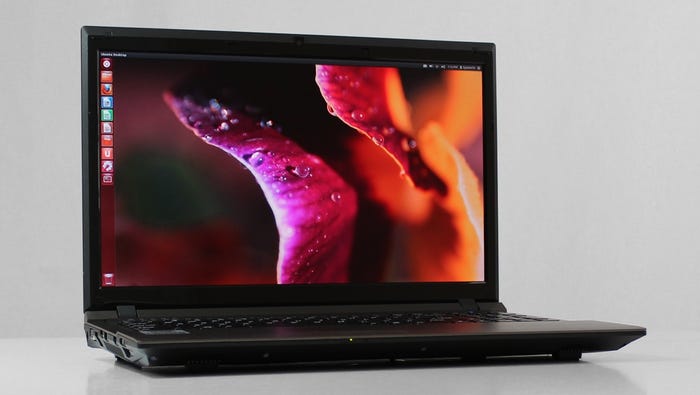System76 Courts Ubuntu Users with Shiny New Laptop
While Linux users may suffer the stereotype of being cheap, that isn't stopping open source OEMs from courting customers willing to pay premium prices for premium PCs.
 While Linux users may suffer the stereotype of being cheap, that isn’t stopping open source OEMs from courting customers willing to pay premium prices for premium PCs. Case in point: eRacks recently introduced a new line of high-end desktops, and System76 followed suit with the debut of the Gazelle Professional Laptop, which, for all its power, actually prices out quite competitively with PCs subject to the “Windows tax.”
While Linux users may suffer the stereotype of being cheap, that isn’t stopping open source OEMs from courting customers willing to pay premium prices for premium PCs. Case in point: eRacks recently introduced a new line of high-end desktops, and System76 followed suit with the debut of the Gazelle Professional Laptop, which, for all its power, actually prices out quite competitively with PCs subject to the “Windows tax.”
There can be little question that the Linux crowd constitutes something less than a hardware vendor’s dream, at least from a business perspective. More tech-savvy on average than the regular Joe, Linux users are more likely to want to build their own PCs than pay someone else to do it for them. They’re also harder to deceive into buying upgrades and other hocus-pocus they don’t need. This isn’t to say one can’t sell PCs to the open source community, but in general the profit margins are bound to be thinner and the marketing tougher than in the hardware market at large.
It’s thus all the more remarkable to see OEMs that cater to open source users deploying high-end PCs, thereby betting that Linux aficionados are willing to shell out significant cash in exchange for ready-built, quality hardware. After all, the type of customers interested in high-performance desktops and laptops are also the ones most likely to be power users capable of spotting a bad deal when they see it.
Performance Laptops From System76
But that issue should be of little concern for System76, whose new Gazelle Professional Laptops are well spec’d and competitively priced. The base model comes with an i7 CPU, 1920 x 1080 resolution, 4GB of memory, 500GB of storage, a DVD read-write optical drive and 802.11n wireless. All of these components can be upgraded, with gobs more RAM, an additional hard disk and SSD storage available for those who want them.
And the price for all this is surprisingly reasonable. The base model goes for $899, including a one-year warranty. (Shipping, which is available to 25 countries, is extra.) Ubuntu 12.04, of course, comes preinstalled.
By comparison, Dell’s XPS 17 laptop, which in its basic configuration costs almost exactly the same as the Gazelle, has 2GB more memory and 250GB more storage. But it comes up short in other major respects: the XPS 17’s screen resolution is lower and — yet more important for users interested in seamless performance — it comes only with an i5 processor. Of course, it also ships with Windows preinstalled, along with an ad-infested, reduced-functionality version of Microsoft Word and Excel. Personally, I’d pay extra to be able to get rid of this Office bloatware altogether, an option that Dell unfortunately does not offer.
All things considered, the Gazelle seems clearly to be the better value, and not only because there’s no Windows tax involved. Regardless of which operating system one plans to run, the Gazelle is simply better hardware for the money.
The one thing I’d like to see in the Gazelle is an option for a better video card than the Intel chip, which is currently the only choice. A System76 spokesperson noted Nvidia chips are unavailable on the company’s laptops “due to architectural changes to nVidia’s Optimus technology” that make them impossible to support on Ubuntu, but System76 hopes the support situation will improve in time for Ubuntu 13.04. The spokesperson added that System76 also plans to evaluate AMD 7000 GPUs for future laptops. In any case, I suspect Intel graphics will work well enough for most people, and have the additional benefit of pretty rock-solid Linux support.
GPUs aside, the Gazelle’s reasonable pricing and impressive specifications should make it a welcome product among open source users, who — despite their stereotyping as miserly techies who would rather do everything themselves than shell out an extra penny for service of any kind — are now one step closer to enjoying the same hardware selection and support as those who opt for proprietary platforms.
About the Author
You May Also Like


